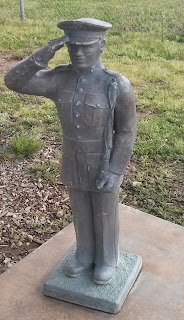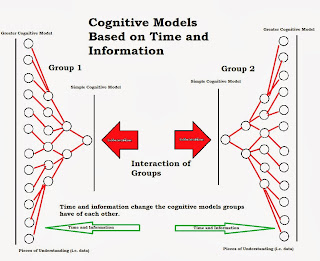Leadership is such a critical aspect of team success that without it they will ultimately fail. Companies spend millions a year selecting, grooming and developing leaders. Organizations that seek to transform their operations should keep an eye out for transformational leadership that can adjust and change to new environments. Whether one is seeking a business executive or the next military officer understanding emergent transformational leadership as it works in live situations is beneficial for recruitment.
Groups, regardless of type, will eventually form a command structure. It is one of the most natural occurrences in both civilized and uncivilized society. The kind of leadership, poor or high, will determine the values of the group and how well it performs under pressure. Whether discussing business or the military, ensuring the right type of leaders makes their way forward helps in developing high functioning teams.
Research into military teams highlights how transformational grassroots military leadership emerges from within the ranks when times are tough. Traits of emergent transformational leadership includes: visionary, leads by example, empowering others, sincerity of purpose, moral value system, genuine car for others, compassion, self-sacrificing, and self-efficacy (Bangari & Singh, 2014).
The confident but compassionate leader runs contrary to cultural fallacies that believe effective leadership is a domination game only. Transformational leaders create followers where power oriented leaders rely too heavily on formal position or fear that limits loyalty. Having the “golden touch” with others will still being driven toward goals seems to make a significant difference in outcomes.
Selecting and fostering leadership in business and military occupations is important because they can inspire followers to raise their performance to accomplish objectives above and beyond themselves. Ensuring that the people with the right characteristics are brought forward and develop a sense of responsibility for others helps in solidifying social bonds and promotes loyalty.
Bangari, R. & Sngh, V. (2014). Establishing a framework of transformational grassroots military leadership: lessons from high-intensity, high-risk operational environments. The Journal for Decision Makers, 39 (3).
The blog discusses current affairs and development of national economic and social health through unique idea generation. Consider the blog a type of thought experiment where ideas are generated to be pondered but should never be considered definitive as a final conclusion. It is just a pathway to understanding and one may equally reject as accept ideas as theoretical dribble. New perspectives, new opportunities, for a new generation. “The price of freedom is eternal vigilance.”—Thomas Jefferson
Showing posts with label team building. Show all posts
Showing posts with label team building. Show all posts
Tuesday, June 16, 2015
Friday, November 1, 2013
Communication Creates Higher Cognitive Models for Team Building
Workplace communication and cross-culture
interaction can help foster greater levels of collaborative effort. A paper by
Huber & Lews (2011) highlights how heuristics and bias are a platform for
first understanding others but additional information creates stronger cognitive
models. It is these models within groups or across groups that adjust
overtime to create mutual development.
When individuals understand each other’s cognitive
models they create cross-understanding (Huber & Lewis, 2010).
Cross-understanding can also occur on a group level whereby a cognitive model
for a group and their vantage point has been developed. Knowing how your
communication partners think and understand can be beneficial for relating
information in a way in which it is palatable and creating shared
understandings.
Shared understandings range from low to high in
terms of their accuracy and quantity of information. Some may know very little
about other groups while some may have a great deal of experience. This is a
level of shared social theory or shared social understanding. This is generally
based in familiarity, cross-communication, and reflection. Even members within
the same group may have different understandings of others even though they
have shared similar traits.
People come
to understand others through default templates that are full of assumptions. As
they interact with others, communicate, share experiences, and see how others
act in certain situations they come to update those templates. It is a process
of offering new information based within real life experience.
Conflict is often caused by misunderstandings or
unreasonable behavior. The more groups interact and share relevant information
the better the decisions of the group. This process can only work if members
are free to talk, share ideas, and brainstorm the possibilities. Group think
occurs when individuals are not free to communicate leading to one sided
vantage points and strategies.
Over compliance to group norms, assumptions and
rules creates 1.) a lack of new information, and 2.) poorer overall decisions
that limit cross understanding. Group
assumptions based on heuristics create faster reactions but also limit the
potential to be accurate in decision-making. Quick assumptions are regularly
faulty as they are confined by a lack of available information.
The paper brings forward concepts that may be useful
to businesses that are either in the process of developing stronger teams or
would like to reduce encampment within their ranks. People often choose to work
with others that are similar to themselves. Each brings forward their own
cognitive model based with quick heuristic platforms. As they interact with
each other it broadens their ability to understand the other. When these
cognitive platforms are different than other members of the same group there is
pressure overtime to solidify them into shared conscious understandings (i.e.
the stream of conscious).
Huber, G. & Lewis, K. (2011).
Cross-understanding and shared social theories. Academy of Management Review, 36 (2).
Huber, G. P., & Lewis, K.
2010. Cross-understanding: Implications for group cognition and performance. Academy of Management Review, 35:
6–26.
Subscribe to:
Posts (Atom)

